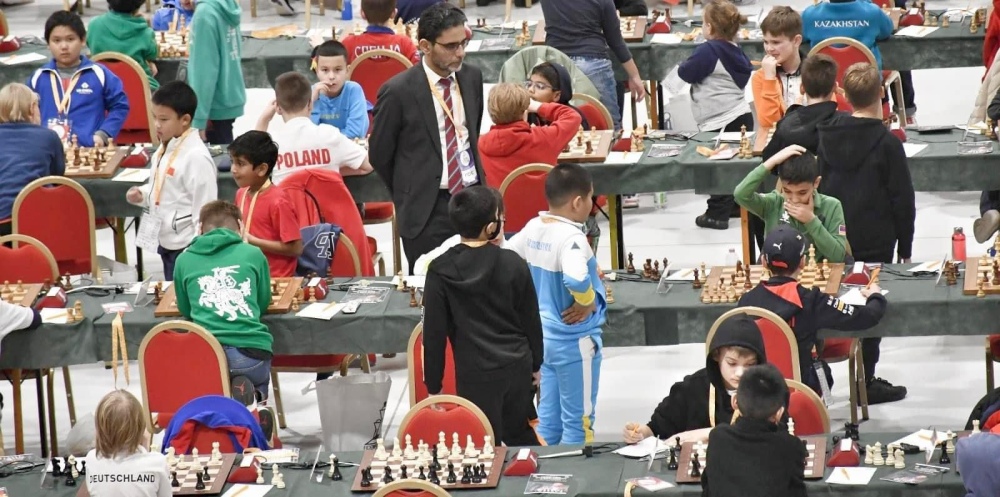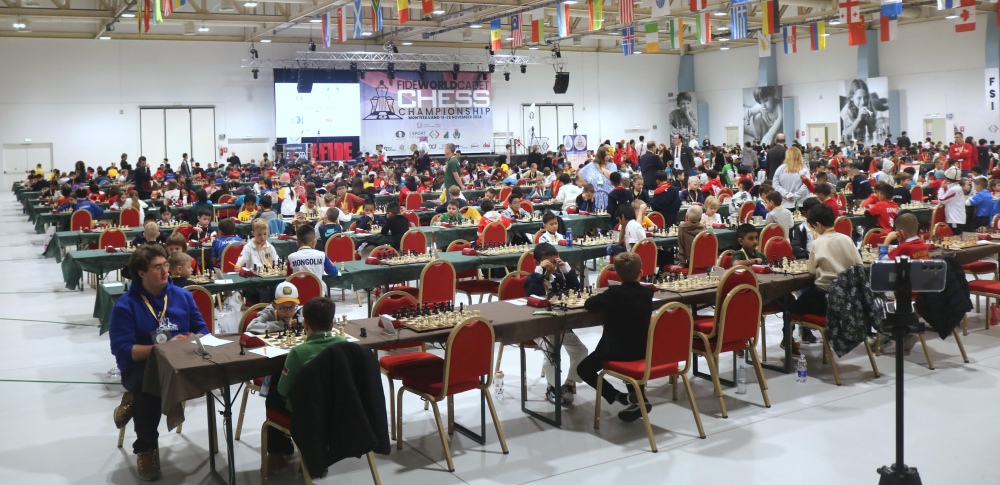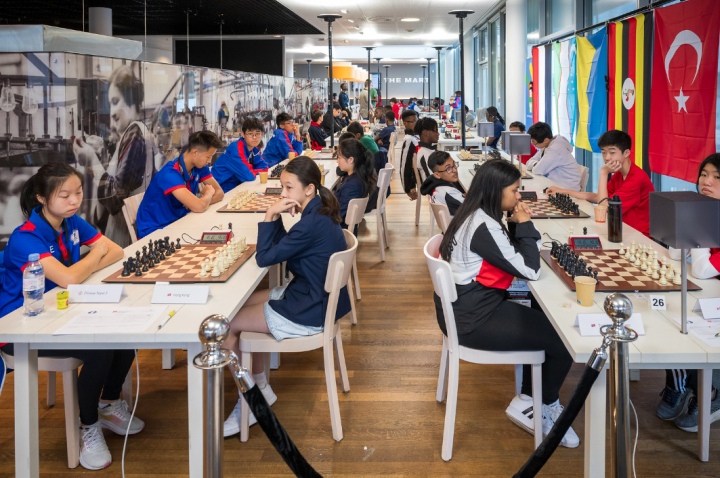
On the third day of the Youth Olympiad, two rounds were played. It was a day filled with sharp openings and tough endgames, and above all, it became China’s day.
At the beginning of the third day, China and the Netherlands 1 were leading the standings. In the fourth round, these teams faced each other. The winner of this match would take the lead. There isn’t a player who falls behind the others in team China: they all score above average. In fact, at the start of the day, all Chinese players are still undefeated. Although the Dutch team has also collected all match points, the individual results are somewhat more variable.
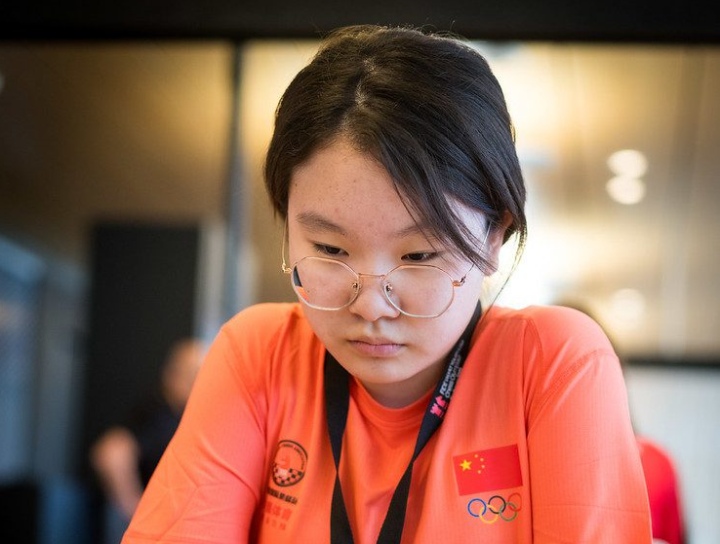
Photo: Lennart Ootes
The powerful Chinese player Miaoyi Lu continues to win. On the live stream, Stefan Kuipers tells his co-commentator Anna-Maja Kazarian about one of his favorites in this tournament: China’s board four player, Miaoyi Lu. Both in the opening and in the endgame, she is intimidatingly fast and accurate. In her game in the third round against the Dutch Dana Verheij, she pauses in a sharp Richter-Rauzer variation of the Sicilian:
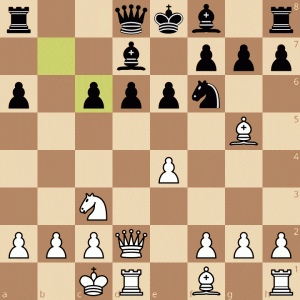
This seems justified. Interesting possibilities like 10.e5! are already on the horizon. When the d-file opens, the power of the battery of rook and queen becomes evident. At the same time, the knight and queen are tied to the defense of the bishop on d7. Miaoyi Lu chooses the equally strong 10.f4 and after 10…Be7, she plays 11.e5. This move has now become even stronger. After 11…dxe5 12.fxe5 Nd5 13.Bxe7 Qxe7 14.Ne4, it becomes clear that the dark squares are vulnerable in Black’s camp. Black seems to get away with 14…0-0 15.c4 Nb6 16.Qf2 Rab8; everything is covered.
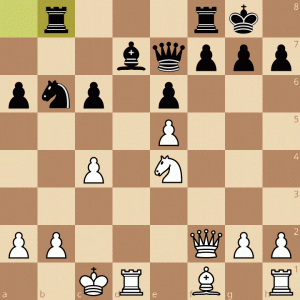
But that’s not the case. Miaoyi Lu demonstrates the weaknesses of the black position with 17.Nf6+!! Naturally, black must not capture, and after the sad 17…Kh8 18.Qh4 h6, the knight remains invulnerable, allowing white to calmly build up an attack. The game didn’t last much longer. After 19.Bd3 Na4, white wins the black queen: 20.Qe4 g6 21.Qh4! White retreats to threaten checkmate on h6 and bring a deadly discovered check into the position. After 21…Kg7, 22.Nh5+ decides the game. 1-0. Once again, an excellent performance by the Chinese player.
At the second board, we see Tong(Qd) Xiao win convincingly against Arthur de Winter. For a long time, the players followed a recent top-level game between Pentala Harikrishna and Nikita Vitiugov, which was won by the latter. Even then, the player playing with the black pieces remained unfazed after a check and moved his king confidently with 10…Kf8.
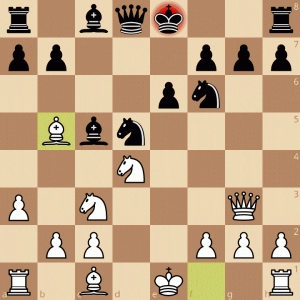
However, the king turned out to be less safe than expected. The following position emerged several moves down the road:

Although black had the opportunity to fork the queen and bishop with 27…f4, white was not concerned about it. After 28.Bxf4 gxf4 29.Nxf4, the black king is under attack and the black pieces become dead wood. The rook on h8, the bishop on f8, and the knight on h6 are all written off, while the white rooks are ready to invade the seventh rank. White soon won. 1-0
When the third board between Prajit Sai Kumar and Xiangrui Kong was won by the Chinese player, Yichen Han on board 1 had to defend the Dutch honor against Haowen Xue. However, he only managed to achieve a draw with the white pieces. China confidently won by a score of 3½-½ and grabbed the lead.
Inevitably, there are many teams in pursuit. The eagerness of the teams to win is evident from the number of Najdorf positions in the playing hall. Additionally, the fast time control of 45+10 leads to true chess spectacles. In the second board of the match Kazakhstan 1–Azerbaijan, Ahmad Khagan seemed to have more success with the white pieces against Daniyal Sapenov.
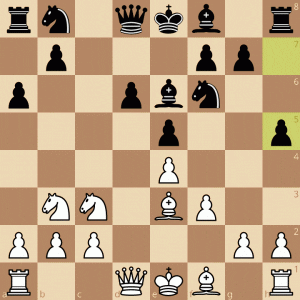
The game followed the same variation as the game of the day yesterday (Milikow—Makridis, brilliantly won by the latter), but instead of the calm 9.Be2, White played 9.Nd5 Bxd5 10.exd5, resulting in a completely different pawn structure. The position in the next diagram seems intimidating for Black, but in reality, the black king can navigate through it.
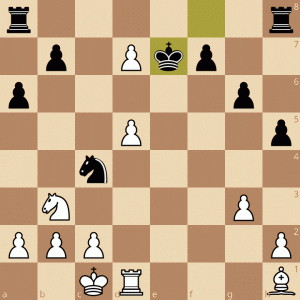
Meanwhile, the white pawn on d5 is merely blocking the white pieces. White tried to remedy this by sacrificing his pawn with 25.d6+, but it made little difference. Not much later, a draw by repetition was agreed.
The match between Kazakhstan 1 and Azerbaijan was decided on the lower two boards. On the fourth board, a mutual pawn breakthrough led to almost comical scenes.
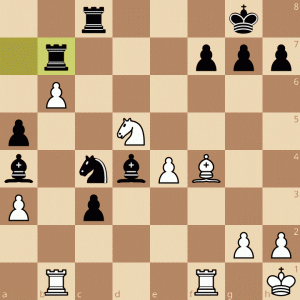
Alua Nurmanova from Kazakhstan (Black) had already won a piece, but with advanced pawns, caution is always required. Her opponent from Azerbaijan Narmin Abdinova tried to complicate things with 36.Ne7+ Rxe7 37.b7, but by then, Black had enough material to sacrifice the rook with 37…Rxb7 and then advance her c-passer. Black won, resulting in a convincing 3-1 victory for Kazakhstan 1 over Azerbaijan.
Unfortunately for WIM Zsoka Gaal of Hungary, who is one of the few girls consistently sitting at the first board in the tournament, her team couldn’t capitalize on her convincing victory with the black pieces over Ukrainian FM Maksym Dubnevych. Ukraine decided the match in their favor (3-1) despite Hungary’s higher ratings on all boards. The final position on board 3, between Vladyslav Fishchuk and Kristof Pal Kolimar, tells the story.
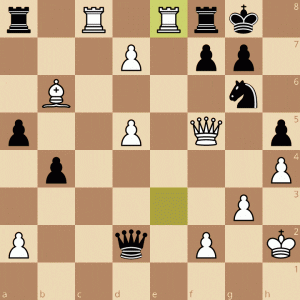
The other two games were decided in the rook endgame. Matyas Palczert continued pressing for a win against Anastasiia Hnatyshyn in a seemingly equal position. However, he risked going down.
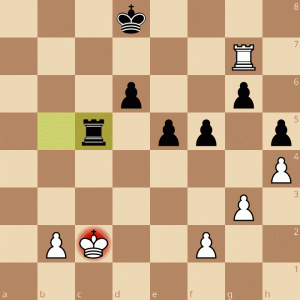
Matyas played 45.Kb1?! here to escape from the check. He had his reasons for this move: Anastasiia had less than a minute on her clock, and moreover, the b-pawn could potentially become a dangerous passer. However, the subsequent moves were not always accurate, with both players missing chances to win. Additionally, Matyas’s clock was ticking down as well.
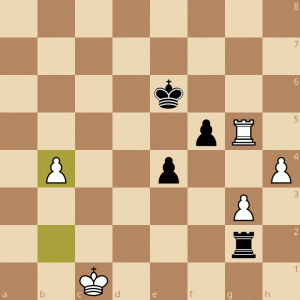
In this position, Anastasiia could have taken advantage of Matyas’s earlier optimism with 52…e3! The point is that Black threatens …Rg1+ followed by …e2, promoting the pawn. White would need to move the king closer to the pawn with 53.Kd1, but that would give Black the opportunity to bring their own king forward. The double threat of checkmate on the back rank and promotion should secure the win for Black.
However, things unfolded differently. The white king moved away from the bottom rank, and pawns were exchanged. In the position below:
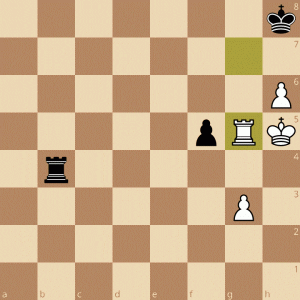
69…Rb3 was the only move that could have kept Black in the game. If more pawns were traded, White could no longer win. If White tries to enclose the f-pawn with 70.Kg6, Black can simply play 70…Rb6+ to force the White king to retreat and avoid pawn exchange. However, Anastasiia played passively with 69…Rb5??, allowing 70.g4. Taking advantage of the pin, Matyas won the last black pawn and eventually the game.
After four rounds, China standed alone at the top. Below them were Turkey, Uzbekistan, and Kazakhstan, who have only seen one match end in a draw while winning the rest.
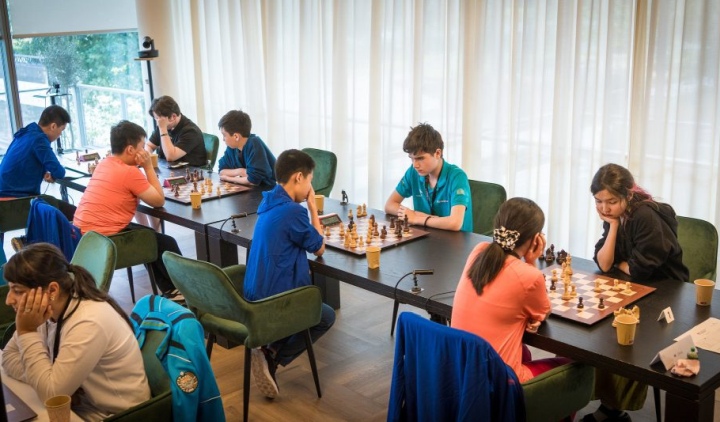
The Chinese team (on the back) vs Kazakhstan. Photo: Lennart Ootes
In Round 5, at the top table, China faced the new challenger for the lead in the standings, Kazakhstan 1. While the Kazakh team were eager challenge China, Miaoyi Lu, China’s star player, continued her winning streak. She launched an attack from a Sicilian Kalashnikov, aggressively pushing her h-pawn forward. However, the game unfolded differently as Alua Nurmanova, her opponent, brought her queen into play via a4, diverting the black pieces from their attack on the king’s side. Miaoyi couldn’t hold the position together, and the central e5-pawn was lost.

Only 23…Ke8 could have kept the e5-pawn for Black, but this move is too passive to even consider. Besides, there’s something hanging on b7. Thus, Black went all-in on the attack with 23…Rah8. After 24.Rxe5 Kf8, White made a pivotal decision:

Here, Alua chose 25.Qxd6+!? grabbing a pawn, but after 25…Kg7, Black had a double attack: Black threatened both to capture the pawn on h2 and to play 26…Qc1+ to get out of the pin, after which Black could capture the queen on d6. It would have been better for White to play 25.h4, allowing White to consolidate calmly. White played 26.Rexf5! at the right time. The endgame should be winning for White, but that’s easier said than done. Lu managed to win again, continuing her winning streak.
Her teammates also proved stronger their Kazakhstani opponents – a convincing 3½-½ victory for China. Only Daniyal Sapenov managed to score a half point for Kazakhstan 1, while both Haowen Xue and Xiangrui Kong of China won their games.
In the morning round, Turkey was the first to score a victory, routing France by 3.5-0.5. Ewen Pichon defended France’s honor by holding board 1 player Ediz Gurel to a draw. Ediz returned from the World Cup with his head held high, where he made a name for himself by defeating experienced Grandmaster Velimir Ivic in the first round with a brilliant exchange sacrifice. However, Ivic managed to strike back and ultimately overcome Ediz in the tiebreaks.

Ediz Gurel. Photo: Lennart Ootes
In the afternoon round, Turkey faced Uzbekistan. Ediz wisely avoided yet another Najdorf by capturing back with the queen after 3…cxd4, opting for an anti-Sicilian approach. This decision worked out well for him, although his opponent Khumoyun Begmuratov fought hard to hold his position together. Eventually, a queen endgame was reached, which played to the strengths of the Turkish talent.
The first Dutch team faced Armenia in the afternoon round. On the top board, Yichen Han had to defend a challenging endgame:
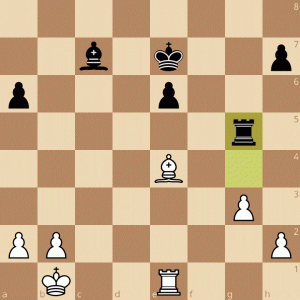
After 29.Bxh7 Rh5, Black cannot simply win the pawn back. White can play 30.Bg8, and after 30…Rxh2 31.Rxe6+ Kf8, the bishop is not trapped. Moreover, White can play 32.Rxa6!! The point is that after 32…Kxg8 33.Ra8+ Kf7 and 34.Ra7, White regains the piece. Therefore, Yichen played 32…Be5, but by this point, Black had no more pawns. Black’s only hope was the opposite-colored bishops. The critical moment came in the position below:
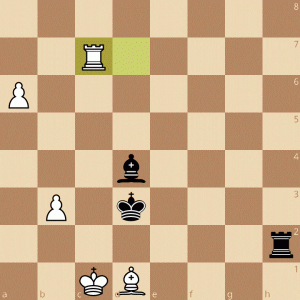
Yichen played 47…Bc3??, but the bishop had to keep guarding a7 to prevent the a-pawn from queening. After some repetition of moves with 48.Rd7+ Bd4 49.Rc7 Bc3, Robert sealed the deal with 50.a7 Ra2, followed by the clever 51.Be2+!! Black cannot capture effectively, as after 51…Rxe2, there’s an intermediate check with 52.Rd7+ and promotion on the next move. In the game, Yichen captured with the king, but as the white rook cut off the black king, the white player easily promoted their pawn and won. 1-0.
On the second board, Arthur de Winter struck back for the Netherlands. The Dutch talent surprised his opponent Erik R. Gasparyan with a novelty in the Caro-Kann Defense. In order to escape an attack, Erik sacrificed his f7-pawn, but after that his position to fell apart.
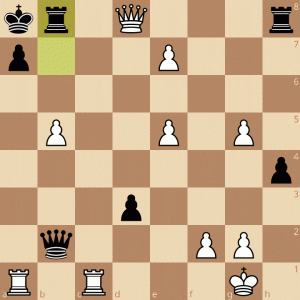
Arthur crowned his attack in the following position with a mating sequence: 32.Rxa7+! 1-0.
Despite having chances in the opening phase, Dana Verheij lost her way on board four against Nvard Hayrapetyan. She trapped her own bishop on b5, thinking she could initiate a strong king-side attack. However, Nvard skillfully neutralized all the threats. On board 3, Prajit Sai Kumar took too much risk in an unclear middlegame by pushing his e-pawn all the way to e3. When the pieces were traded, the pawn proved vulnerable and was eventually capture by White who converted his material advantage in an endgame. Benik Agasarov finished it off neatly. Armenia-Netherlands 1: 3-1.
The other Dutch teams are competing in the lower standings. Interestingly, all Dutch teams (except the first team) won in the morning round with a score of 3-1 against their opponents. Respectively, they defeated Albania (against NL2), Montenegro (against NL3), and Japan (against NL4). Notable performances are seen from Rhys Arnold in NL2 and Boyd Leenen in NL4, both with scores of 4/5.

Netherlands 4 with Boyd Leenen, at the back left. Photo: Frans Peeters
Despite her loss in the first round against Miras Assylov from Kazakhstan, Zsoka Gaal is having a fantastic tournament. In round five, she once again proved too strong for her opponent. This time, Anthony Atanasov from Canada was the victim.

By now, everything is winning, but here Zsoka forced promotion with 52.Bd6 beautifully. Mate is inevitable. A crucial point, as Hungary won 3-1 against their Canadian opponents.
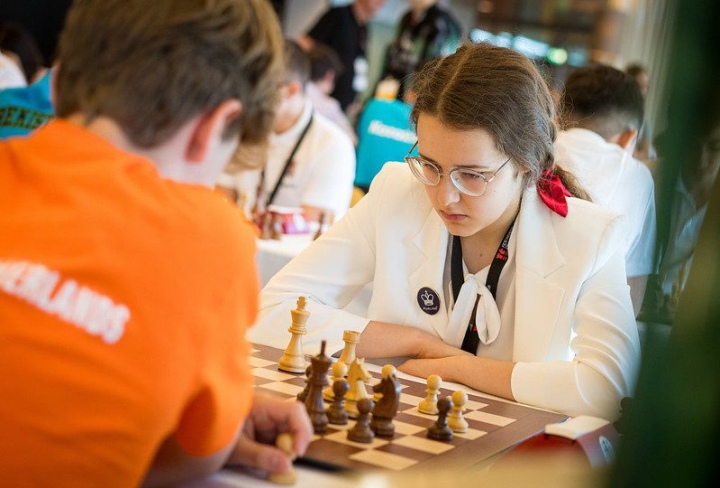
Zsoka Gaal is performing well in the Olympiad. Photo: Lennart Ootes
At the end of day 3, China is firmly in the lead, followed by Turkey. Armenia is behind Turkey, and Hungary is following Armenia. Now that we’re past the halfway point of the tournament, with four rounds remaining, the battle for the title is taking shape. It promises to be an exciting contest. Who can stop China?
Top 10 teams after Round 5:
1. China – 10 points
2. Turkey – 9
3. Armenia – 8
4. Hungary – 8
5. Uzbekistan – 7
6. Ukraine – 7
7. Kazakhstan 1 – 7
8. India – 7
9. Israel – 7
10. Greece – 7
Text: Daniël Zevenhuizen
Photos: Lennart Ootes and Frans Peeters
Official website: youtholympiad2023.fide.com/



